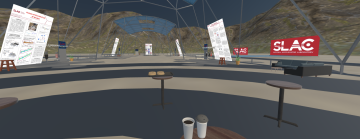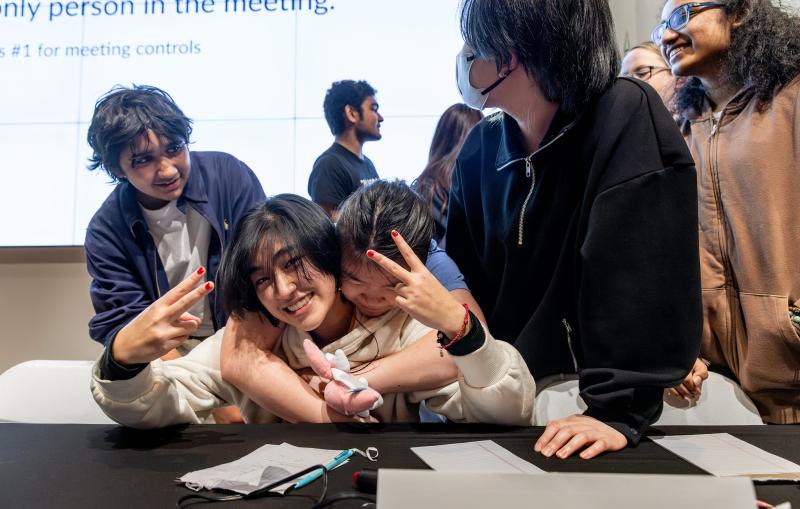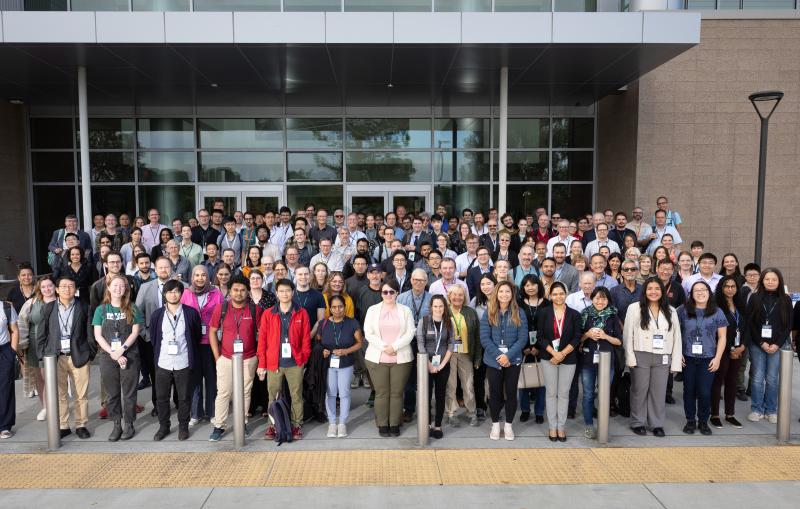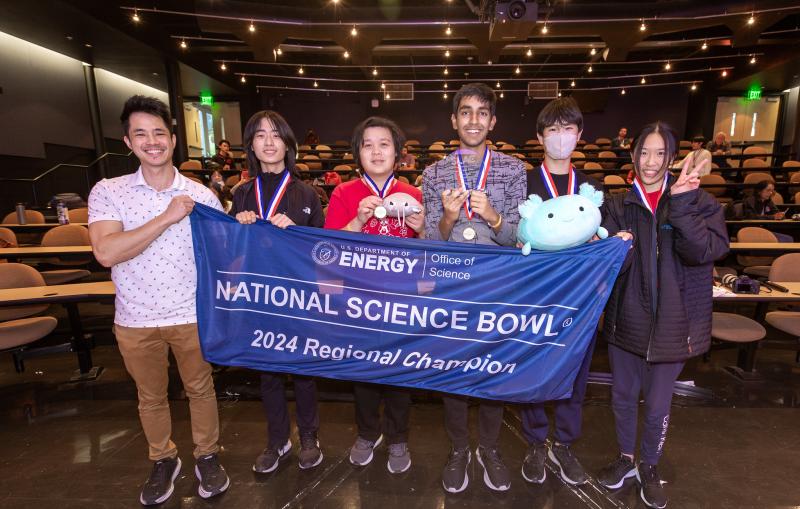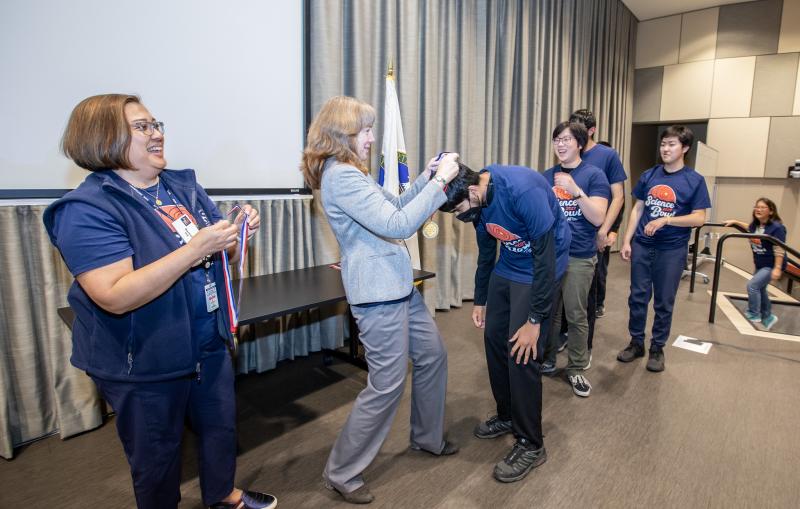Bringing science home: SLAC’s summer programs go virtual
Online educational programs offer new possibilities.
By Niba Audrey Nirmal
Absorbed in thought, Owen Convery puzzles over his machine learning algorithm. Normally, this summer student would be working on the problem at the Linac Coherent Light Source (LCLS) X-ray laser facility at the Department of Energy’s SLAC National Accelerator Laboratory – but this year, he works at home.
Every summer, hundreds of students come to SLAC to participate in a variety of internships and programs. But when shelter-in-place restrictions went into effect due to COVID-19, SLAC scientists and staff designed unique ways to help students experience science remotely.
Science at SLAC can be very hands-on, so virtual research comes with challenges. However, organizers found ways around them and even discovered some advantages to going virtual, such as increased participation and the ability to host participants from around the world. In the absence of long commutes, extra living expenses or moving costs, they say, the programs have become more equitable.
This was Convery’s second summer as a SLAC intern. Last year he created a graphical user interface, but this year his project shifted completely online. “I’m using machine learning to create a virtual diagnostic software tool for use at LCLS,” he explains. “Machine learning has been used to predict the outputs of the LCLS before, but limited research has been done to quantify the uncertainty of those predictions.”
Focus on inclusion
SLAC’s summer programs engage a wide range of learners, from middle schoolers to undergraduate and graduate students.
Elementary schoolers, the youngest group, participated in the CORE Science Institute, a week-long science learning program for underserved students hosted by one of SLAC’s employee resource groups, the Committee for Outreach, Recruitment & Engagement (CORE). Though students typically come from schools around the Bay Area, this year’s camp expanded its reach. “We opened it up to say, hey, anyone in this age group who wants to participate, sign up!” said Dorian Bohler, SLAC scientist and CSI organizer.
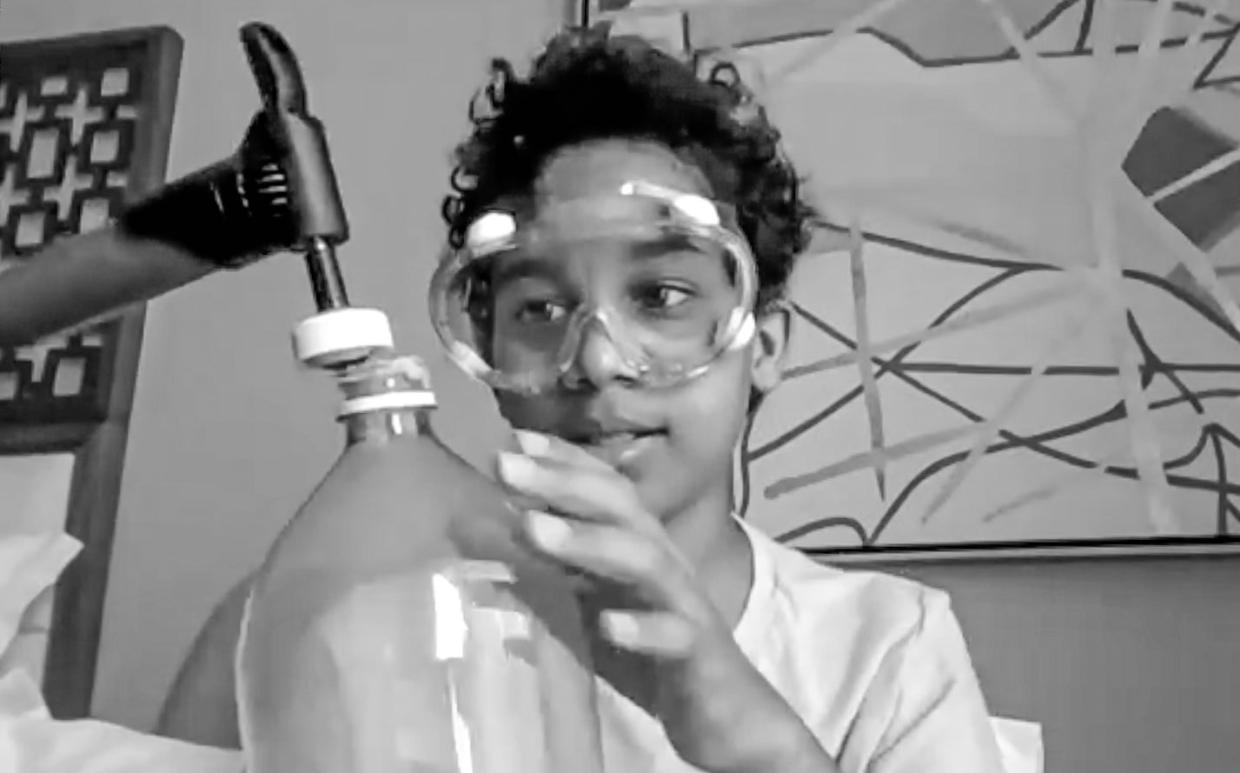
This year, nearly half the students were from out of state, from places like Florida, Maryland, and Illinois. One out-of-state parent wrote, “Thank you for opening the program to students outside of California. Many of the topics discussed were a first for my son.”
To carry out science experiments at home, CSI students received packages in the mail with DIY experiments. One of the most popular lessons taught students the principles of condensation and cloud formation using a bottle, isopropyl alcohol, a tire stem and a bike pump. Students also interacted with scientists in one-on-one interviews. “Once he started asking questions to the scientist and relating what they did to everyday life, [my son] thought it was pretty cool,” one parent wrote in the program review.
High school students are exposed to science and scientists by attending Science Accelerating Girl’s Engagement in STEM (SAGE-S), co-organized with the DOE’s Lawrence Berkeley National Laboratory. Last year, the program had 40 students but in going virtual, this year’s cohort was the largest yet with 96 virtual students. SAGE-S principal investigator Giulia Lanza explained, “We were able to accept all students who applied.”
Worldwide participation
After more than 47 years of in-person learning, the SLAC Summer Institute (SSI) virtual program had record participation and no registration fee. “Usually, there are about 130 registrants. This year we have well over 1,600,” said Thomas Rizzo, SSI organizer and senior staff scientist.
The 2020 theme, “The Almost Invisibles: Exploring the Weakly Coupled Universe,” focused on the physics of neutrinos, dark matter, dark energy and gravitational waves. Their study is particularly challenging due to their faint interactions with visible matter – leading to their collective name, the “almost invisibles.”
Speakers, graduate students, and postdocs attended from all over the world. For two weeks, attendees listened to seminars and posed questions through a live-updating Google document. In place of group projects, SSI hosted a virtual poster session for students to discuss and receive feedback on their graduate work.
“Normally, the biggest challenge is setting up the program and getting the speakers,” Rizzo says. “This year, it was the mechanics of running a webinar.”
Professional experiences
Undergraduate and graduate college students have the opportunity to get professional experience doing research at SLAC through programs such as the Science Undergraduate Laboratory Internship (SULI), Community College Internship (CCI), and LCLS Internship.
SULI and CCI coordinator Enrique Cuellar revised everything in order to move projects online. “I basically threw away everything that I had already done, contacted all the mentors and asked them, ‘Can the projects be completed remotely? If not, can they be modified so that they can be completed remotely or do you have an alternative project for that student?’”
In addition to research experience, SLAC’s summer undergraduates receive many forms of professional enrichment. This year, 50 SULI and seven CCI students studied lectures, attended workshops, and presented their summer’s work during the course of five days of 10-minute oral presentations to their peers and mentors. For the first time, several national lab directors gave a roundtable presentation about the labs and their operations, funding and science. “This was possible to do because it was all online,” Cuellar says, adding that this year’s changes will be used to improve SLAC programs in the future: “In fact, we liked it so much that we're probably going to do it regardless of whether we're no longer sheltering in place.”
Senior scientist Alan Fry, founder and organizer of the LCLS internships, also moved opportunities online for his students. Mentors submitted descriptions of remote projects, then selected interns who best matched their project needs. “My mentor and I chat once a week on Zoom and we communicate a lot throughout the day,” notes Convery. “The other interns and I presented the projects we’re working on to our entire lab as well.”
You can find more information about SLAC’s educational and internship programs here.
For questions or comments, contact the SLAC Office of Communications at communications@slac.stanford.edu.
SLAC is a vibrant multiprogram laboratory that explores how the universe works at the biggest, smallest and fastest scales and invents powerful tools used by scientists around the globe. With research spanning particle physics, astrophysics and cosmology, materials, chemistry, bio- and energy sciences and scientific computing, we help solve real-world problems and advance the interests of the nation.
SLAC is operated by Stanford University for the U.S. Department of Energy’s Office of Science. The Office of Science is the single largest supporter of basic research in the physical sciences in the United States and is working to address some of the most pressing challenges of our time.
